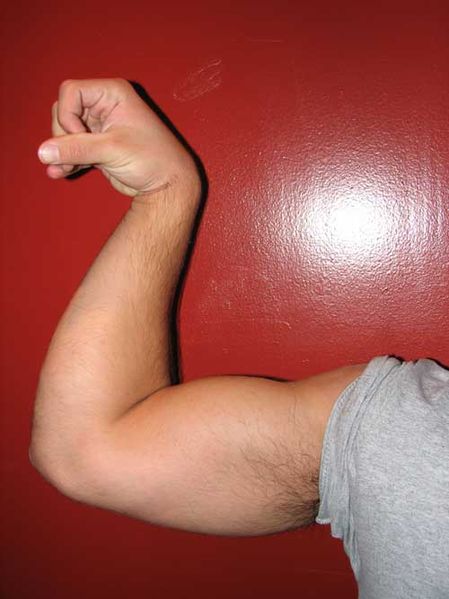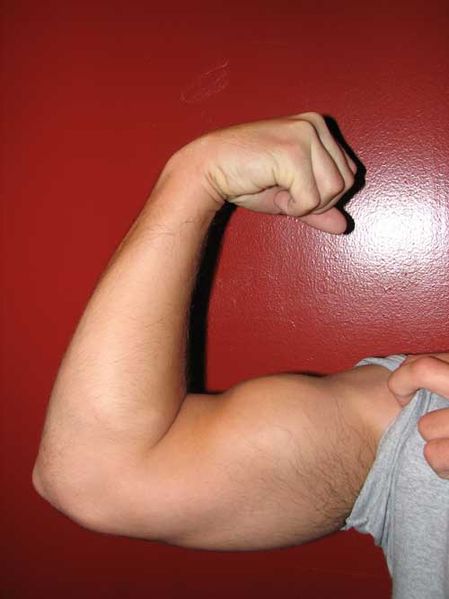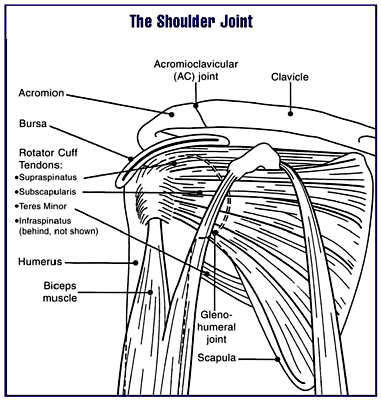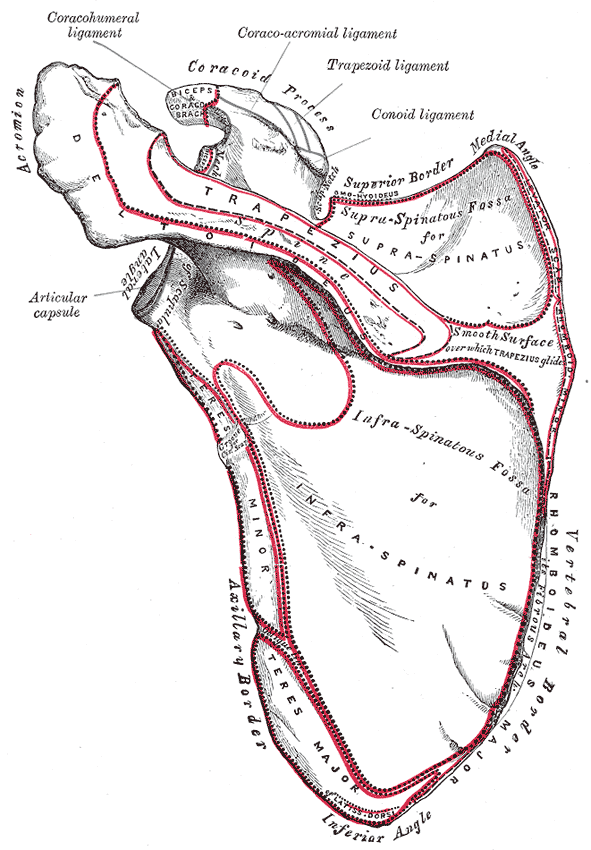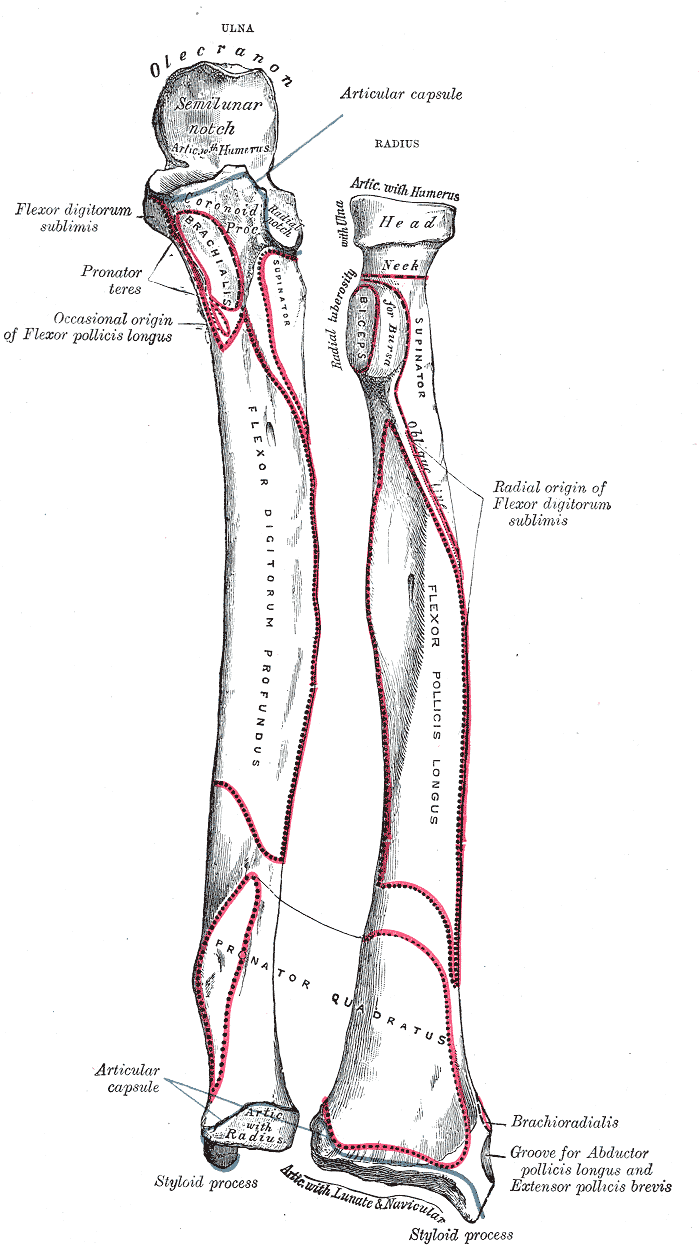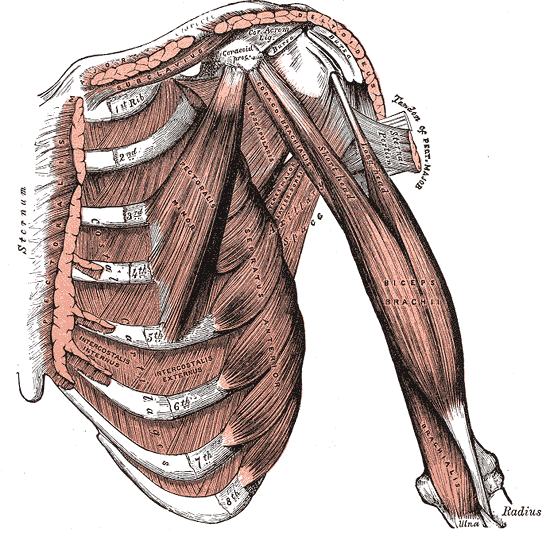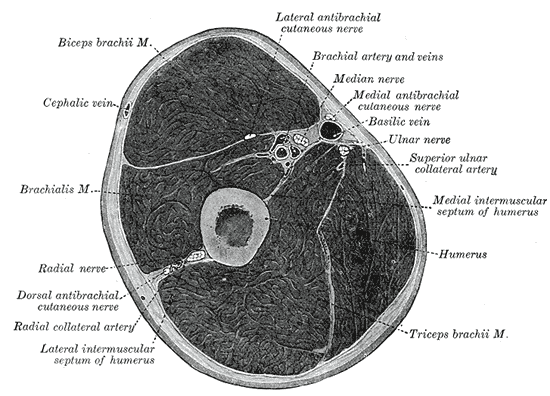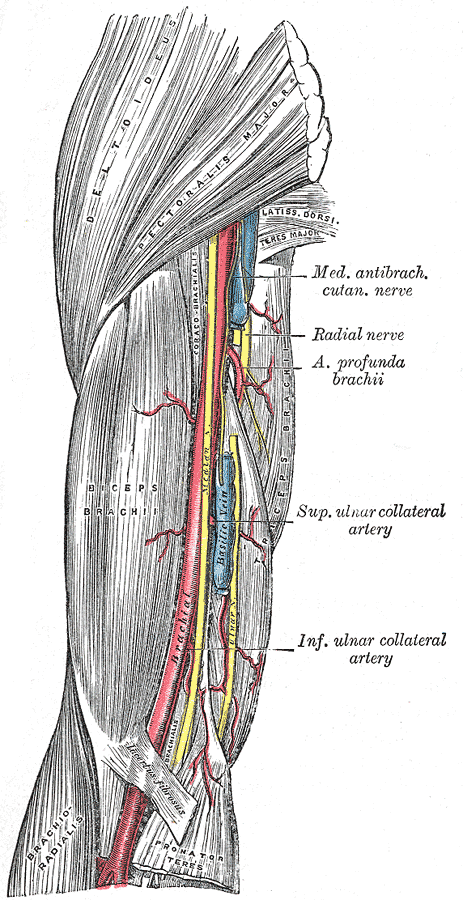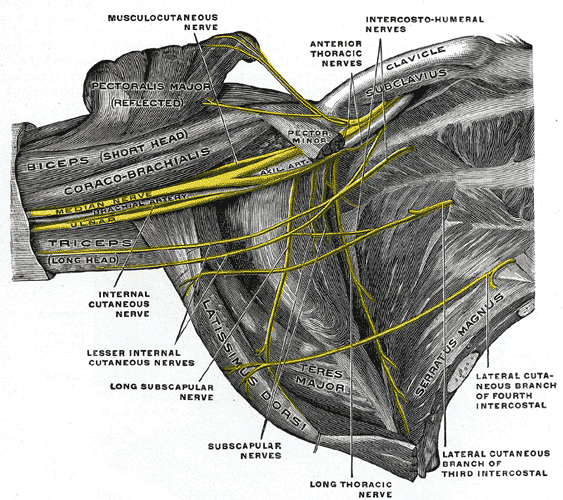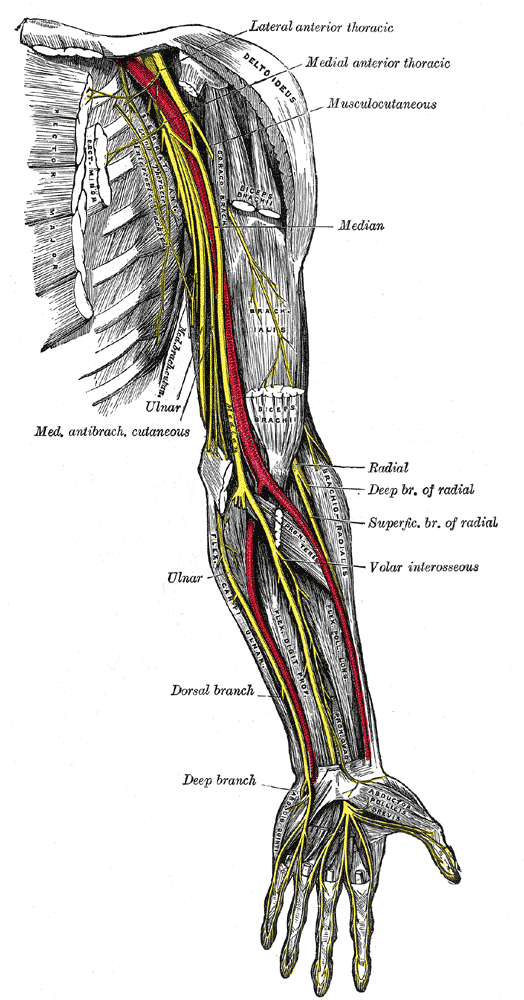Biceps brachii muscle
- For other uses, see biceps.
Template:Muscle infobox In human anatomy, the biceps brachii is a muscle located on the upper arm. The biceps has several functions, the most important simply being to flex the elbow and to rotate the forearm.
The biceps brachii is arguably the best known muscle, as it lies fairly superficially, and is often well-defined even in non-athletes. The muscle is popular amongst bodybuilders, and can grow quite large through weight training.
Terminology
The term biceps brachii is a Latin phrase meaning "two-headed [muscle] of the arm", in reference to the fact that the muscle consists of two bundles each with its own origin but with a common insertion point near the elbow.
Note that the word biceps is used in both singular and plural: the form bicep, although common, is incorrect. (The proper Latin plural bicipites is considered pedantic and rarely used in English.)
Anatomy
Proximally, the short head of the biceps attaches to the coracoid process of the scapula. The tendon of the long head passes into the joint capsule at the head of the humerus, and attaches on the scapula at the supraglenoid tubercle.
Distally, biceps attaches to the radial tuberosity, and because this bone can rotate, the biceps also supinates the forearm. The biceps also connects with the fascia of the medial side of the arm, at the bicipital aponeurosis.
Two additional muscles lie underneath the biceps brachii. These are the coracobrachialis muscle, which like the biceps attaches to the coracoid process of the scapula, and the brachialis muscle which connects to the ulna and the humerus.
Functions
The biceps is tri-articulate, meaning that it works across three joints. The most important of these functions are to flex the elbow and to supinate the forearm.
These joints and the associated actions are as follows:
- Shoulder joint (glenohumeral joint) - flexion (bringing arm upward by a forward motion)
- Elbow joint - flexion. Arguably the most functional of the biceps' functions is elbow flexion. This refers to bending the forearm toward the upper arm, resulting in a decrease of angle. More commonly, this is known as the action performed in a biceps curl. The brachialis muscle and brachioradialis muscle are known to aid in this action as well.
- Proximal radioulnar joint - supination of the forearm. One of the main functions of the biceps is to, along with the supinator muscle, aid in supination of the forearm, which refers to the allowing the forearm, and subsequently, the palm, to be rotated or moved toward the anatomical position, the resulting hand position not dissimilar to that of the biceps curl. This has also been achieved through the use of functional electrical stimulation as a means of emulating electrical impulses used within the synapses, and allow slight movement within those with paralysis. [1] It has also been proven through several tests into muscle group stimulation that a supinated grip allows for close and normal-grip bench press exercises to have a much more profound effect on the biceps brachii and the clavicular portion of the pectoralis major.[citation needed]
Training
There are many forms of resisted elbow flexion, better known as a curling motion, which exercise the biceps.
Some common iterations include:
- The barbell curl
- The wide barbell curl
- The straight bar curl
- The dumbbell curl
- The incline dumbbell curl
- The seated dumbbell curl
- The cable curl
Working out the upper back muscles through rowing and pulling motions will also incorporate some Biceps Brachii due to great amounts of necessary elbow flexion. However, simultaneous extension of the glenohumeral joint will result in some lengthening of the biceps, thus weakening the biceps' contraction and deferring a great deal of the elbow flexion work to the brachialis and brachioradialis. The role of the biceps during such motions is what is known as a dynamic stabilizer.
Additional images
-
An example of an arm flexed in the pronated position; with the biceps partially contracted.
-
An example of an arm flexed in a supinated position with the biceps fully contracted.
-
Diagram of the human shoulder joint
-
Left scapula. Dorsal surface.
-
Bones of left forearm. Anterior aspect.
-
Deep muscles of the chest and front of the arm, with the boundaries of the axilla.
-
Cross-section through the middle of upper arm.
-
Front of the left forearm. Superficial muscles.
-
The brachial artery.
-
The right brachial plexus (infraclavicular portion) in the axillary fossa; viewed from below and in front.
-
Nerves of the left upper extremity.
References
- ↑ Naito A, Yajima M, Fukamachi H, Ushikoshi K, Handa Y, Hoshimiya N, Shimizu Y. (1994) Functional electrical stimulation (FES) to the biceps brachii for controlling forearm supination in the paralyzed upper extremity. Tohoku journal of experimental medicine
External links
- Template:MuscleLoyola
- Template:MuscleUWash
- Template:GPnotebook
- Template:SUNYAnatomyLabs
- Template:Exrx
Template:Muscles of upper limb
ca:Bíceps braquial cs:Dvojhlavý sval pažní de:Musculus biceps brachii id:Otot biceps brachii he:שריר הזרוע הדו ראשי nl:Musculus biceps brachii fi:Hauis sv:Biceps brachii th:กล้ามเนื้อไบเซ็บ บราคิไอ
